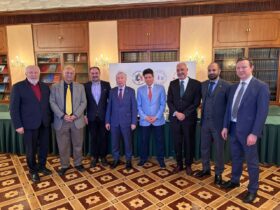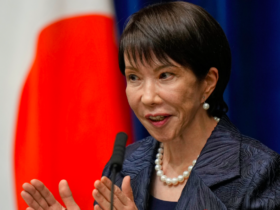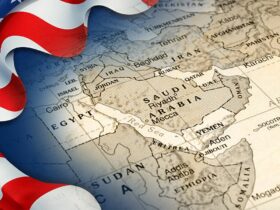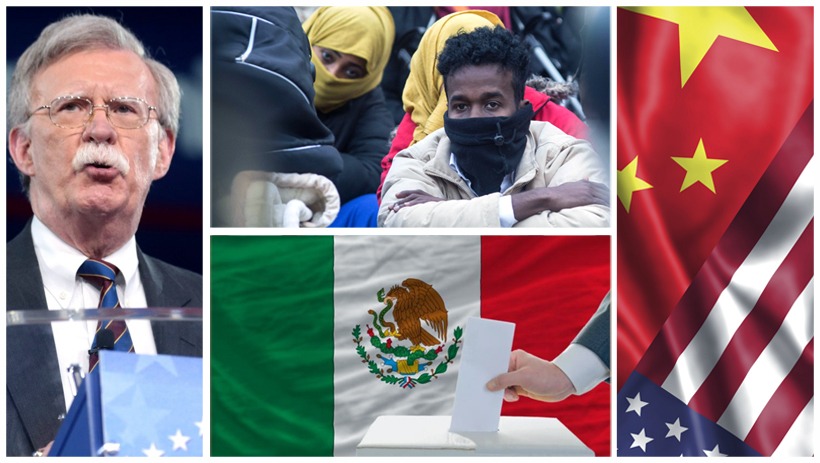By Adnan Akfırat, Chairman of the Turkish-Chinese Business Development and Friendship Association
In Beijing, the annual meetings of China’s legislative bodies, the National People’s Congress (NPC) and the Chinese People’s Political Consultative Conference (CPPCC), are hold on March 4th to March 11th. .
As the world’s largest economy in terms of purchasing power, the People’s Republic of China is outlining its 2025 government program and development goals for the upcoming year. Naturally, the world’s eyes were on these “Two Sessions.”
On March 4, Chinese Premier Li Qiang, the second-highest-ranking official in China’s political hierarchy, presented the government program during the first session of the NPC. On March 5, Premier Li also announced the Economic and Social Development Plan for 2025. On the same day, Finance Minister Lan Foan submitted the budget to lawmakers for review on behalf of the State Council.
The “Two Sessions” will continue until March 11th. During this period, with input from NPC and CPPCC representatives, the budget, the economic and social development plan, and the government program will be finalized. The legislature will also approve changes within the State Council, China’s executive body, and confirm high-level appointments.
Key Economic Indicators in 2024
According to Premier Li Qiang, the key economic achievements of 2024 are as follows:
- China’s GDP increased by 5% compared to the previous year, reaching 134.9 trillion yuan ($18.5 trillion).
- A total of 12.56 million new urban jobs were created.
- The urban unemployment rate was maintained at 5.1%.
- The Consumer Price Index (CPI) rose by 0.2%.
- Foreign exchange reserves exceeded $3.2 trillion.
- Real disposable income per capita grew by 5.1%.
- Grain production reached a record 700 million metric tons.
- Investment in manufacturing increased by 9.2%.
- The added value of high-tech manufacturing increased by 8.9%, while equipment manufacturing grew by 7.7%.
- The digital economy’s share of GDP rose to 10%.
- The production of new energy vehicles surpassed 13 million.
- The average fine particulate matter (PM2.5) concentration in provinces fell by 2.7%.
- The proportion of surface water with a high-quality rating reached 90.4%.
- Energy consumption per unit of GDP decreased by more than 3%.
- Installed renewable energy capacity increased by 370 million kilowatts.
- Renewable energy now accounts for approximately 40% of total electricity generation.
- The urban population share rose to 67%.
After outlining these achievements, Premier Li Qiang stated that the central government’s expenditures are projected to increase by 6.9% in 2025.
The highest portion of central government spending is allocated to defense, followed by science and technology. In 2025, the fastest-growing expenditure categories will be science and technology, as well as diplomatic activities.
Key Spending Categories with Planned Increases:
- National defense: $244 billion (+7.2%)
- Science and technology: $55 billion (+10%)
- Public security: $33 billion (+7.3%)
- Education: $24 billion (+5%)
- Food security: $18 billion (+6.1%)
- Diplomatic activities: $8.84 billion (+8.4%)
By comparison, the U.S. military budget for 2025 is projected to be over 3.5 times larger than China’s, reaching $850 billion. Despite the U.S. increasing its military encirclement of China, Beijing is raising its defense budget by only 7.2%, while accelerating the modernization of its armed forces.
China’s Goals for 2025
Premier Li Qiang highlighted the challenges posed by global conditions, China’s economic and social underdevelopment, and governance inefficiencies, and outlined the government’s primary goals for 2025:
- Increasing domestic demand
- Promoting integrated development through technological and industrial innovation
- Ensuring stability in the housing market and stock market
- Continuing to improve living standards
- Strengthening social cohesion and stability
The Premier expressed the country’s core development targets in numerical terms:
- GDP growth of around 5%
- Urban unemployment rate of approximately 5.5%
- Creation of over 12 million new urban jobs
- CPI growth of around 2%
- Increase in personal income
- Maintenance of a basic balance in payments
- Grain production of approximately 700 million tons
- Reduction in energy consumption per unit of GDP by about 3%
- Continued improvements in environmental conditions
A key statement in the government program reflects the administration’s people-centered governance approach:
“Governments at all levels will ensure the provision of basic living needs, salary payments, and public services. As the central government, we will tighten our belts, maintain strict financial and economic discipline in public institutions, and prohibit wasteful public spending. This will allow us to allocate more resources to development while meeting the people’s expectations for a better life.”
Xi Jinping’s Strategic Objectives
The Government Program and the Economic and Social Development Plan were formulated based on discussions at the Central Economic Work Conference held on December 12-13, 2024, under the leadership of the Communist Party of China (CPC).
At this meeting, Chinese President Xi Jinping outlined five key objectives:
- Enhancing government capabilities to improve market efficiency
- Coordinating total supply and demand
- Integrating new economic drivers with improvements in traditional industries
- Revitalizing existing economic forces while optimizing the use of growing resources
- Maintaining reasonable quantitative growth while advancing high-quality development
China Provides Confidence to Developing Nations
As economic difficulties persist in advanced capitalist countries, China’s stable growth has become a source of confidence for the world. It is estimated that China’s economic expansion contributes approximately 30% to global growth.
While the CPC-led government continues to develop the national economy, it places the improvement of people’s living standards at the core of its policies. China leads in scientific and technological advancements, not to build hegemony, but to drive quality development and contribute to humanity. A stronger China contributes to the emergence of a multipolar world.
China’s rise also benefits Turkiye, which is striving to break free from Western hegemony. With its economic prosperity growing, China presents to Turkiye with access to a vast market of 1.4 billion people with increasing purchasing power.

















Leave a Reply